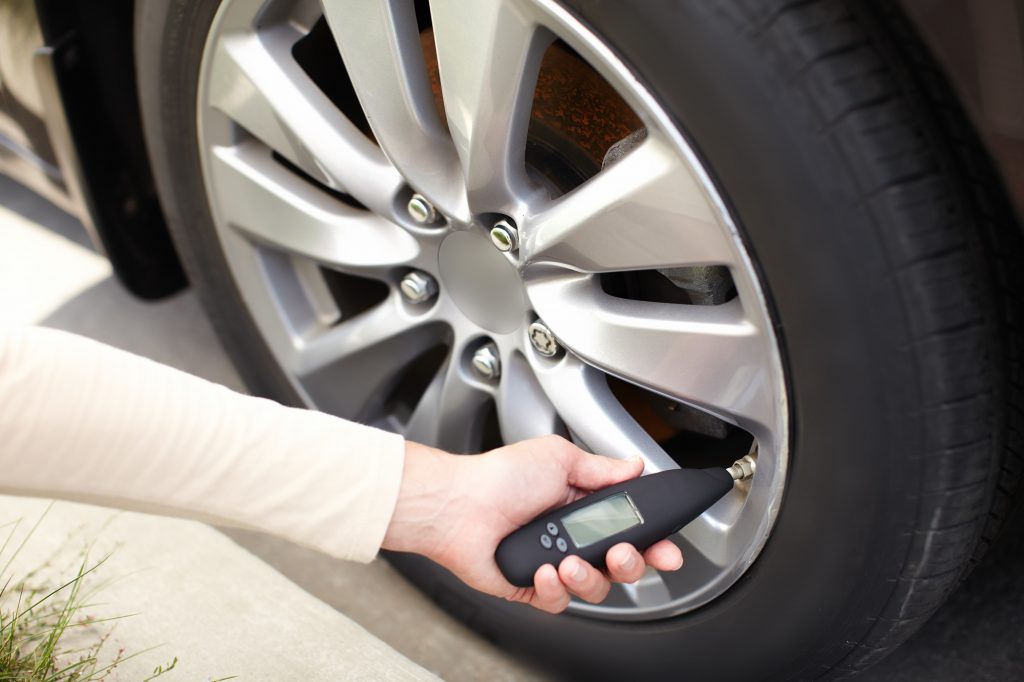
AAA estimates that the average driver who puts 15,000 miles on their vehicle in a year will spend close to $9000.00 in fuel, maintenance, repairs, registrations, and depreciation every year.
Multiply that number by the 250 million+ cars that are on the road today and you have a whole lot of people spending a whole lot of money getting from point A to point B.
Did you know though that having optimal tire pressure can have a profound effect on your vehicle’s health and associated costs?
For many drivers though, tire pressure is an afterthought. Even if it does come to mind, many car owners don’t even know what their optimal tire pressure should be.
To help hit home the importance of managing your tire pressure correctly, our team has put together this article. It will cover how to figure out the recommended tire pressure for your vehicle and the benefits having it can bring to you and your car!
How Do You Figure out Your Car’s Recommended Tire Pressure?
To figure out the pressure your vehicle’s manufacturer recommends your tires be at when you drive off in the morning, check the inside of your driver’s side door. There, situated in the door’s jamb, should be a placard. That placard will have the suggested PSI for each of your tires.
If for whatever reason the placard described is not inside your car’s door jamb, your manufacturer’s recommended tire pressure can also be found in your owner’s manual.
Note that throughout the day, your tire pressure will rise and fall due to weather conditions. So long as you start your morning with the recommended PSI you can be sure that natural variations will be within a safe range.
What’s The Difference Between Optimal and Maximum Tire Pressure?
Having optimal tire pressure is often confused with having maximum tire pressure.
The maximum pressure your tires can handle with a full load is the number found on your tire’s sidewall. It is not recommended that you fill your tires to the max for every day driving.
Having your tires inflated to their maximum PSI as opposed to their optimal PSI can cause additional wear to the tires which will reduce their lifespan. It can also have an adverse effect on your vehicle’s handling and on the overall comfort of your ride.
When Is It Appropriate to Fill Your Tires to Their Maximum Pressure?
While it’s not appropriate to drive around with your tires filled to their max on a daily basis, there are instances where over-inflating or even under inflating your tires can be helpful.
Some instances for over inflation include when carrying oversized loads or in severely cold conditions.
Instances such as when you’re stuck in sand or snow may call for underinflated tires.
To see when diverting from your car’s optimal tire pressure is appropriate, it’s important that you consult your vehicle’s manual.
The Benefits of Driving With Optimal Tire Pressure
Driving with your manufacturer’s recommended tire pressure on your everyday commute brings with it a bevy of benefits. Below are a few of the primary ones.
Safety
There’s no benefit more important to properly inflated tires than safety. With tires that have the correct PSI, you can expect to have excellent control over your vehicle and an increased breaking efficiency.
When driving with over-inflated tires, you increase your tire’s risk of experiencing a blowout which can be extremely dangerous.
Comfort
Tires with proper tire pressure hug the road the perfect amount. That means that you can expect a smooth ride free from drag as is experienced with under-inflated tires or the high sensitivity you’d get with over-inflated tires.
Fuel Efficiency
If your tires are under inflated your vehicle drags on the road. This additional drag makes your car work harder to move and consequently, costs you more money in gas.
Longer Lifespan
If you’re diligent about setting your tire’s PSI correctly you can expect that your tires will have an excellent chance of lasting as long as the manufacturer suggests. This means fewer trips to the car dealer to swap out tires and more money in your pocket.
How To Check Your Tire’s Pressure
Now that we’ve impressed upon you the importance of proper tire pressure and how to find it, let’s talk about methods you can use to make checking your pressure habitual.
If you’re managing the tire pressure of a standard, non-recreational/commercial vehicle, a tool as simple as a “pencil tire pressure gauge” can be a perfect companion.
As its name suggests, the tool is about the size of a #2 pencil and can give you an accurate PSI reading in about a second.
If you’re managing tire pressure for larger vehicles like an RV or camper, you may want something a little more robust to manage your tire pressure. This tire pressure monitoring system comes highly recommended by large vehicle experts and may be something to try.
Wrapping Up How to Figure Out Your Optimal Tire Pressure and Why It’s Important
Having optimal tire pressure isn’t something many drivers think about daily. Unfortunately, that aloofness could come at a great cost.
Not having the recommended tire pressure for your vehicle could mean more money spent, a less comfortable ride and lead to grave safety issues.
To ensure your safety and save yourself time and money, check your vehicle’s door placard or instruction manual and make setting your car’s tire pressure correctly part of your weekly routine!
Are you looking for more auto repair tips and tricks? If so, YouFixCars.com has what you need.
From auto repair tips for engines to motorcycle repair manuals and beyond, if you’re curious about how to care for your set of wheels, dive deeper into our content pool and get educated today!
7 Things You Need to Know About Optimal Tire Pressure posted first on https://jacobslowpriceautoglass.blogspot.com
No comments:
Post a Comment